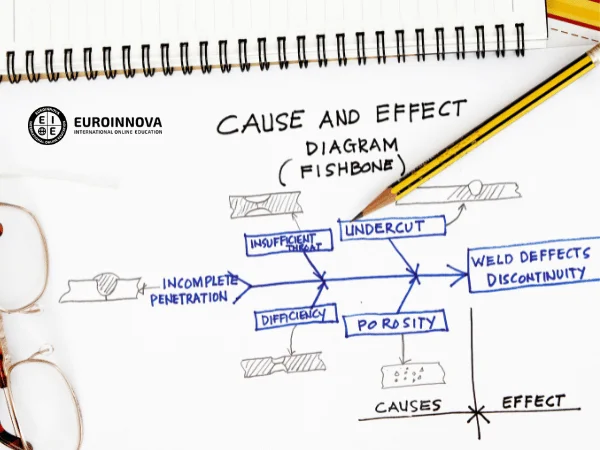Índice
Imagine that you work in a factory and right now you have a quality problem in production. You’ve tried to solve it several times, but the results remain inconsistent, customers are dissatisfied, and operating costs increase. It’s frustrating, isn’t it? Luckily, we have a solution for you: the cause and effect diagram, a fundamental tool in quality management and problem resolution.
This diagram, known as an Ishikawa or fishbone diagram, provides a visual structure that helps identify and categorize possible causes that could contribute to an observed problem. Do you want to learn how to design this tool? Keep reading and we’ll tell you!

The cause and effect diagram was developed by Professor Kaoru Ishikawa in the 1960s and has been a powerful tool for problem analysis ever since. This is a way to organize potential causes into key categories and then conduct a thorough and structured evaluation. Next, we explain the characteristics and elements of the diagram.
The diagram has a structure that resembles the shape of a fishbone, with the effect or problem to be analyzed at the right end of the main line and potential causes grouped in branches extending to the left.
The causes typically fall into broad categories that may include:
To construct the Ishikawa diagram, a work team is assembled that includes people familiar with the problem. Potential causes are then identified through a brainstorming process and grouped into the aforementioned categories. Subsequently, the most relevant causes for the problem in question are analyzed and prioritized.
As we have explained before, the cause and effect diagram is a versatile tool that allows you to have a deep and structured understanding of the relationships between various variables that affect a specific problem. Now, don’t you know in what context to apply it? These are some possible scenarios:
At this point, you may already want to know the steps to make your cause and effect diagram. So we didn’t delay it any longer. Take note!
Also you can read about the following topics:

¡Muchas gracias!
Hemos recibido correctamente tus datos. En breve nos pondremos en contacto contigo.